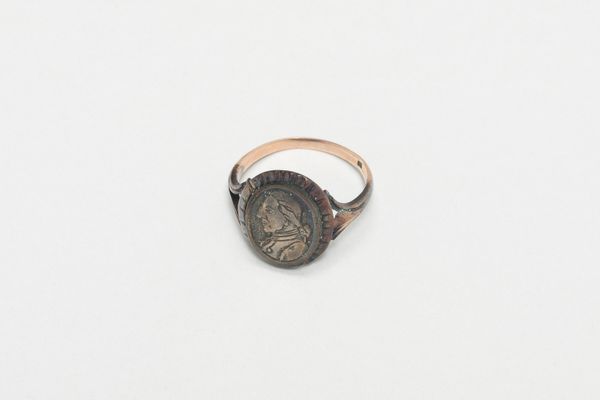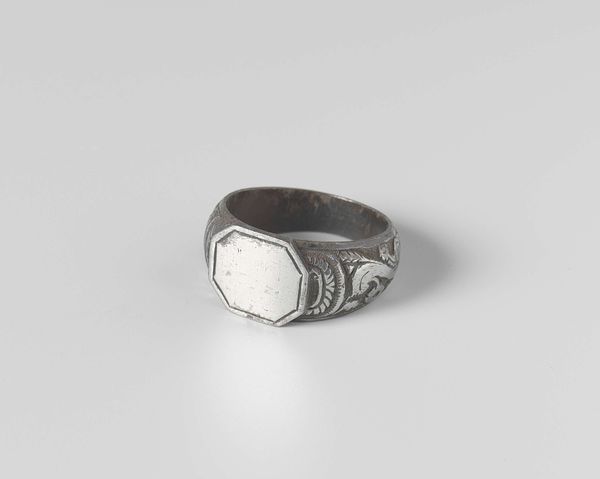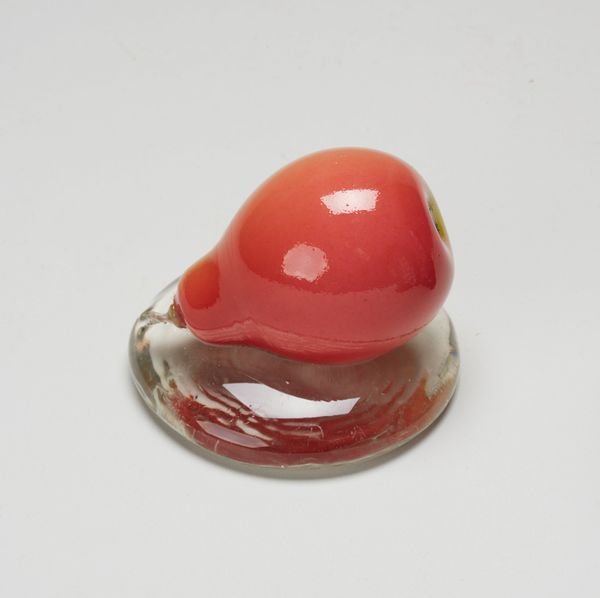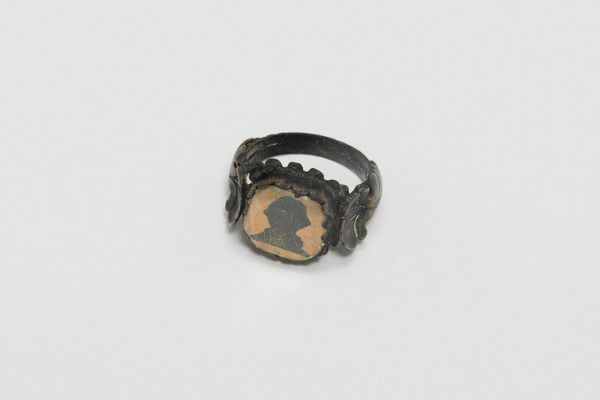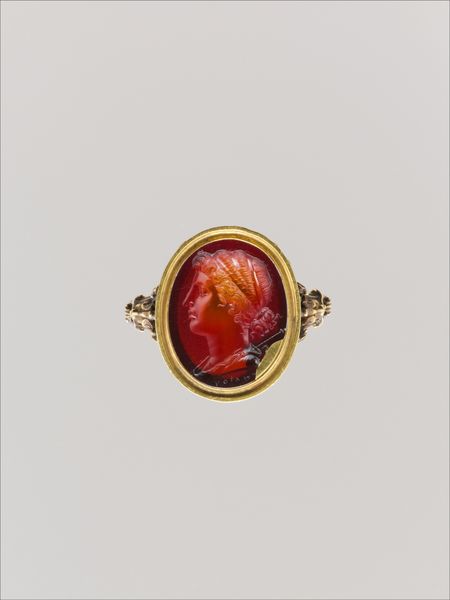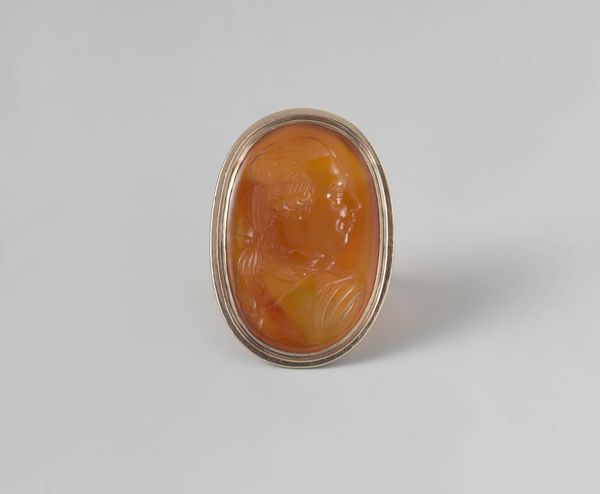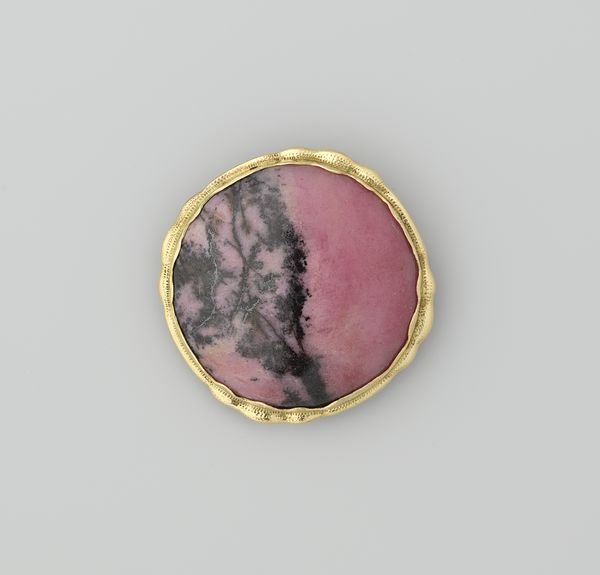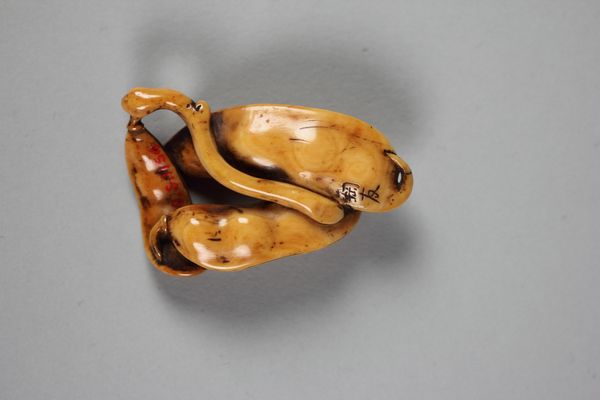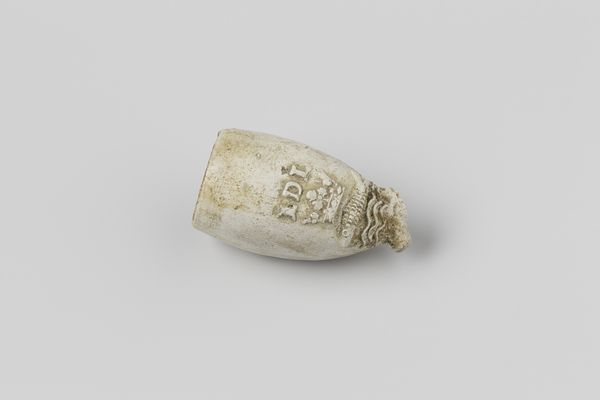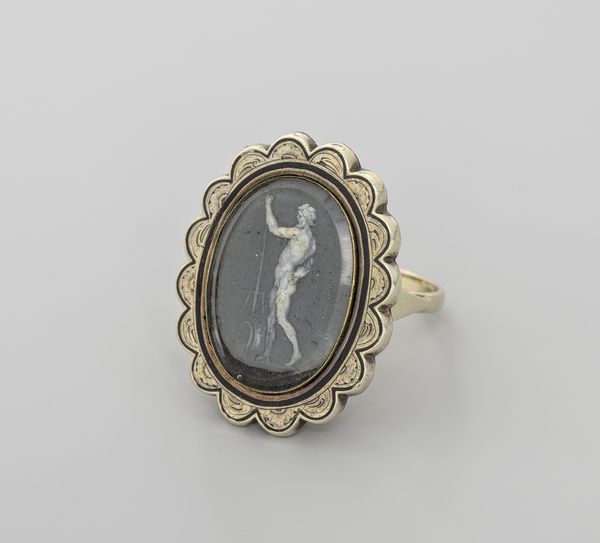
carving, metal, relief, sculpture
#
portrait
#
neoclacissism
#
carving
#
metal
#
relief
#
jewelry
#
sculpture
#
decorative-art
Copyright: Public Domain
Editor: So this “Ring,” made sometime in the 19th century, seems to be made from metal, with a carved relief portrait set within it. It strikes me as classically Neoclassical with a commemorative feel, but who exactly were rings like this made for, and why? Curator: That’s a perceptive observation. These rings were often commissioned or purchased as tokens of affiliation. Think about how the rise of classicism influenced decorative art, becoming accessible to broader audiences beyond royalty and aristocracy. This wasn't just personal adornment; it was about projecting identity, aligning oneself with particular social or political ideals. The "who" becomes incredibly layered – wearers declared loyalties through imagery. Who do you think the ring’s portrait might be of? Editor: Given the Neoclassical style, I’d guess someone associated with power, perhaps even a Roman emperor? It also feels incredibly personal. Curator: Exactly. Consider the cultural moment: mass production allowed for the democratization of this classical imagery. Though it references powerful figures, its small scale, worn on the body, signals personal identification. Perhaps the wearer sought to embody certain virtues associated with this figure? Its significance isn’t just aesthetic. The imagery had implications for one’s own status, their politics, their entire self-conception. Editor: That’s fascinating. So the value isn't necessarily intrinsic but relies heavily on cultural context. It's almost like wearing a political or social statement on your finger! Curator: Precisely. Its worth exists less in its materiality and more in the dialogue it sparks around the social role of art. What assumptions can you now make about the place of rings within museums today, and what social and political work might they now perform? Editor: It gives me a completely different perspective on these historical pieces and the messages they communicate about class and power structures. Thank you! Curator: My pleasure, I hope this approach allows you a nuanced approach to historical art, understanding how it played a part in culture at the time and beyond.
Comments
No comments
Be the first to comment and join the conversation on the ultimate creative platform.

